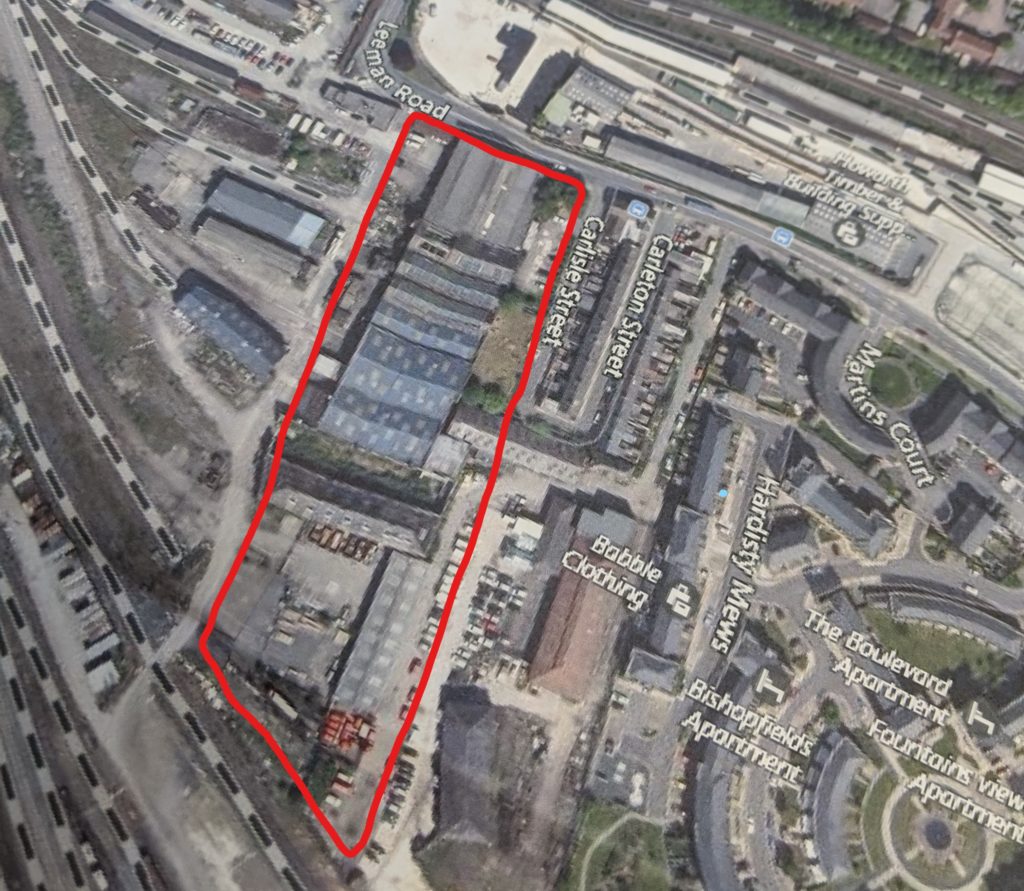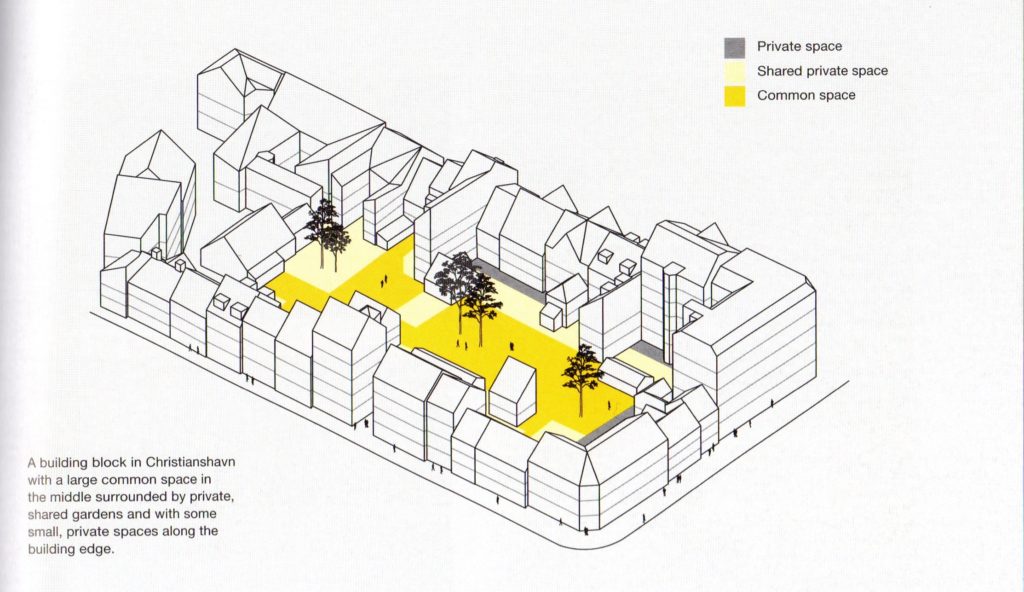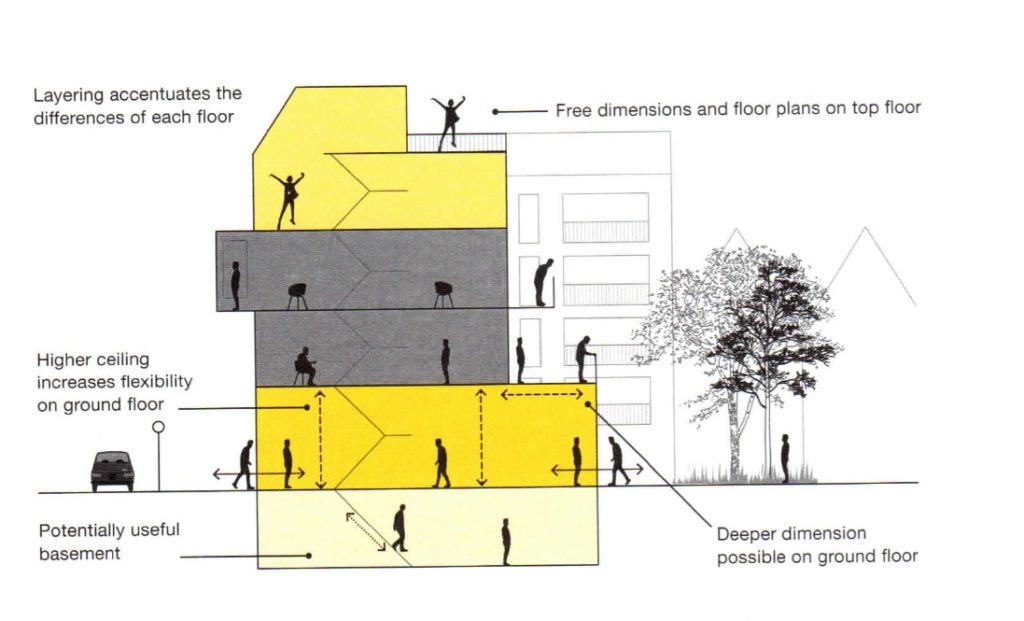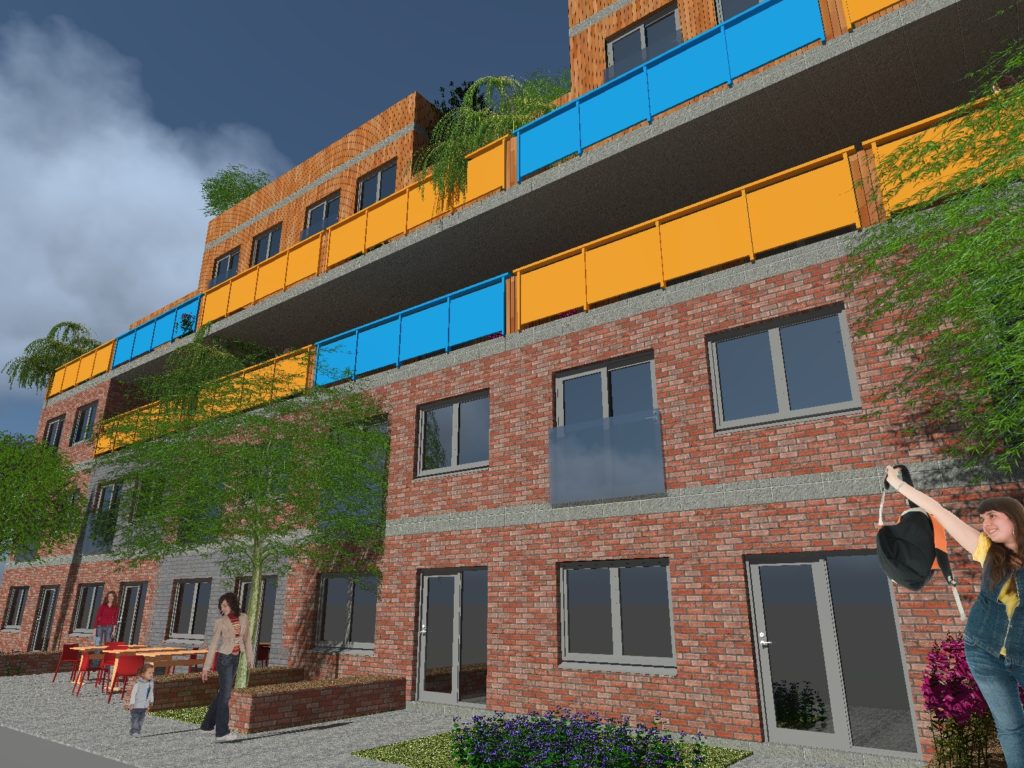
Our workshop on Monday 13th January in the Cinder Building comprised four inter-related sections; the first was simply getting there – high winds and driving rain put a fair few people off and one or two abandoned on the way there, soaked and disorientated. Twelve participants made it, plus Phil & Helen, and Steph Hiscott from Homes England – more about her input in a moment.
The next main chunk of the session was doing some initial thinking about an outline brief – what do we want this place to be, and to do?
Phil started this process rolling by outlining the progress made so far – starting with the Big Ideas from the My York Central public engagement…
- Homes for living, not investment – forever affordable housing
- Exploiting the benefits of high density
- A community made through exchange
…and the questions which emerged from discussions around them…
- How can we create an intergenerational circular economy?
- How can people downsize and use capital to invest in stuff which enriches neighbourhood and their lives?
- How can we make use of York’s inequality for good; How can we help York’s hidden creative industries flourish?
- How might the mixed-use neighbourhood of the future be more like the past than the present?
He then set out some initial steps to draw out some physical scale to this. How big a project are we thinking of? We had had discussions with York Central Partnership a year or so ago, where we put a red line around an area which had various positive features:-
- It was next to The Gatehouse building – still being pursued as a “meanwhile” use to get a community presence on the site
- It was next to the Foundry buildings – identified in the outline consent as being for possible community or educational use
- It was close to the edge of the site and the existing Leeman Road and St.Peter’s Quarter communities
- It was – it turned out – next to the area initially identified as being a likely first phase of development.
The area is shown red-lined below:-

He then outlined some basic thinking from David Sim’s book Soft City (based on very extensive work done by urban design practice Gehl Associates on urban components which work well) on perimeter blocks comprising walk-up mixed use buildings around a space where privacy/access can be controlled by those buildings.

He then described the constraints on building height set out in the parameter plans – part of the approved outline consent. These restrict building height in this area to around 17.5m – realistically around five storeys maximum (allowing a 4m floor-to-floor ground floor and 3m floor-to-floor for the storeys above. So – four or five-storey walk-up buildings would fit.

| He then described measuring the perimeter of the red-lined site, which gives around 300m of frontage. Divide this by (say) 10m between dividing walls, multiply by 5 floors, and you get around 150 units which could be one or two-floor apartments, workshops, offices, shops, café’s etc.
This is a very rough figure, but gives some starting point for thinking about the scale of what we’re shaping. |

Using this as a starting point, we then asked “what would a day be like here? Living or working, what would you do here, what would it feel like, what would the place need to provide you with?” These were the narratives which came out (via Post-Its, obviously)…
“I’ve got a mezzanine live/work apartment but the neighbourhood is important to me too. There’s a community nursery with outside space and a forest school. for me there’s a shared “natter” and hobby space and a studio to do yoga. And as a treat for after there the York Central bakehouse which does the best sourdough in town. Plenty of activity – the public spaces are properly wild so there’s a Saturday morning Park Run through the streets, but also public art and playspaces. There’s off-road trail bike terrain and a climbing wall, plus a lake for wild swimming (and for people who want hotter water there’s a sauna).”
“The central, convenient location is important to me – I can hop onto my bike, head off to Bishopthorpe off road or walk into the city centre avoiding the roads. I can cycle back into town and almost to my door along the riverside, just making a detour to call into our local shop for milk. I’ve got secure cycle parking close to home, and I’m already in a good mood as I get home to change and go meet friends.”
“I love the pleasures of this place. There’s the social – I can walk to work along a green route and use bikeshare to cycle home, but either way I’ll likely say hello to neighbours as the places is designed so you meet people. There’s good stuff in the neighbourhood too – getting to the cinema and pub is easy, and there’s a tapas bar and a patisserie.”
“This is a mixed neighbourhood – there are all sorts of ages, and while some people need a bit of care, others are happy to give it. It’s a place where public health has been thought of, and made positive – there’s a rooftop infinity swimming pool with fantastic views. The streets have been designed for people – children can play there as they’re car-free, and there are places to linger where you know you’ll meet people – there’s no reason to be lonely.”
“It’s a place where once you get outside, you hear birdsong. The public spaces are green, and not just at ground level – go up to the rooftops and there are gardens linked by walkways; the streets aren’t the only way to get around. You can see the distant skies, but there is lots to do; people are neighbourly and impromptu stuff is going on all the time. There are places for public play too – ping pong and stuff like that, or you can just hang out and enjoy the views.”
“It’s a great place to live if you do things on the spur of the moment – there are local facilities including useful shops. It’s social too – you can walk the dog on local streets and spaces to meet and chat with people, and if you want to go further afield there’s direct access to the riverside too.”
“For me I appreciate being close to the station – I can walk there for my commute to Sheffield and the local car club is handy for more awkward journeys. But when I’m home I just love the views – a place to read and be online but immediately return to reality to watch the sunset. There’s secure communal bike parking at the foot of the building, and a shared workshop where you can repair stuff or work on your own stuff. The neighbourhood brings people in too – there are classes, singing groups, and the best bakery.”
“The neighbourhood offers so much – an easy walk into town, maybe through the park or alongside the river. It’s convenient for cycling too (and there’s a shared repair shop!). Stuff to do – art classes – and local shops selling useful stuff – groceries and a bakery. My home’s lovely too – I can use the roof terrace for a glass of wine or a coffee with friends.”
“Surrounded by a lazy river, the neighbourhood is made by its gardens and green space (and the gardens are made by local people – there’s plenty of opportunity to get your hands dirty). In fact it’s the people that drive everything – the place is set up so it’s easy to get involved and to share things, to meet people, though it’s still your own space behind your own front door). The things people need are shared, and places are designed to bring people together – a natural amphitheatre to eat lunch in, and shops and bars on bridges that connect us to the rest of the city. Good walking routes and public transport means the place isn’t dominated by private cars, and there are well-lit places for dog-walking after work too.”
“It’s the collective space that makes it special – there are skill share repair workshops for everything from bike maintenance to electronics repair. There’s a hack space for being creative too. And if you want to simply people-watch or see the world go by then there’s the café upstairs.”
“It’s a real focus for community-led stuff; James came over yesterday and stayed over as we had a morning meeting today with various co-ops and groups within York Central. There’s always food involved and lunch came from our local food co-op – bread baked locally, food grown locally! In the afternoon we had a meeting with members of our housing co-op – we’re one of three on York Central and are finalising plans to build a local strawbale hub building.”
“I’ve got a top-floor apartment and have a short walk to work in a co-owned workspace on the ground floor of my building. Temptingly, among the many local social enterprises, next door is a cooperative coffee shop – and for something stronger there’s a community pub just down the way. If I manage to tear myself away from the neighbourhood it’s an easy walk into town to the cinema. But coming home is good too – I can have a swim in our rooftop pool before bed.”
“The streets are places where people can meet their neighbours – unlike most streets you feel comfortable there, conversations and encounters are unhurried. It works well for all ages too – kids can mix, play – and explore too. Some of the public space feels wild, but safe.”
The third part of the evening was a brief presentation by Steph (on behalf of the unavoidably absent Helen Fielding from the regional Homes England office) and Tim Moon (York’s Community and Self-Build Housing Officer) on ways in which Homes England was working with development partners and communities to provide affordable (in the widest sense) housing. Steph noted that key aims were to increase community-led housing provision, and to secure 130,000 affordable housing starts in the region. Tim pointed out the council’s commitment to 5% of housing on York Central being custom or self-build – which (assuming 2500 overall) sets that requirement at around 125 homes. All of this would be on top of the requirement for 20% Affordable housing – of which 80% would be social rented. Steph’s presentation is available here as a PDF.
Lastly James Newton talked about the role of Yorspace – the community housing group that has been successful in getting a co-housing scheme included within the Lowfields Green development, and is working more broadly to support and enable community-led housing across York. Yorspace is committed to supporting community-led housing on York Central (with any exact relationship between this project and Yorspace to be decided further down the line) and with that in mind James offered to assist in putting together an initial funding application – for up to £10k of reasonably readily-available funding – to support bringing a group together, fleshing out some initial questions about what sort of legal body would be most appropriate, and gathering information by contact with other projects which have experience to pass on. There was general support for this next step.
The session closed, having made good progress and consumed plenty of cake (thanks to Caroline Lewis (Twitter’s @singingfoodie) for maintaining the tradition of cake-fuelled meetings). Thanks also to York Central project director Ian Gray for arranging the venue.